 High food costs continue to impact restaurant operators’ bottom lines. Even though overall inflation has been easing and foods purchased in grocery stores have been costing less than those offered at restaurants, restaurant costs (and many operator expenses) remain high. As a result, consumers may be giving menu prices some extra scrutiny right now — or skipping restaurant meals altogether. In fact, a recent report from AlixPartners found that instead of trading down on restaurant food, consumers have been cutting it out in an effort to protect their budgets. So it’s important to ensure you’re reaping the most benefit from the items you offer. There are a number of actions you can take. You may already be reducing portions and shrinking your overall menu size, and while this is helpful for waste reduction and cost savings, it also leaves room for guests to add to their dish. Play on their desire for customization by offering a selection of ingredient add-ons and side dishes that guests can add to their meal that incrementally increase the price of a dish without giving people sticker shock. Make the most of the sales you get by engineering your menu so its layout naturally leads the guest’s eye to items that generate the most profit for you (and cost your menu so you are well aware of what those menu items are). Finally, lean on other streams of income. Retail items and licensing opportunities may help you generate sales in the background and allow you to smooth out dips in your sales of menu items. 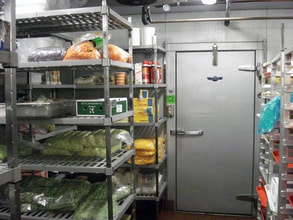 Rare, difficult-to-source ingredients are so 2019. At a time of high inflation, supply-chain strain and increased awareness of carbon footprints, it has become far more fashionable – and yes, far more necessary – for restaurants to take a pantry-to-plate approach. That means creating mindful menus that make the best use of ingredients you have in plentiful supply each season. Most items you order should be workhorse ingredients with a range of applications – as the star of one dish and a supporting player in another, for example, or as a reliable contributor of depth, texture or nutritional content in a variety of dishes. As an extension of that, now is a good time to review your portion sizes, find creative ways to use every part of an ingredient, and repurpose any leftovers into interesting specials. Food waste costs the hospitality industry over $100 billion a year, and more than 70 percent of that waste occurs before it even reaches a guest’s plate. Adopting tools that automate your inventory management, ensure you’re spending money on the best-value ingredients available, and precisely measure the size of a portion can help you ensure you’re not leaving money on the table. 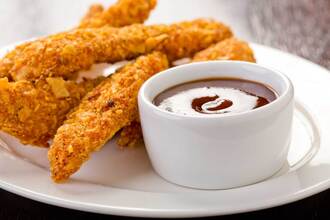 The value menu looks a lot different nowadays at a wide range of quick-service and fast-casual brands. McDonald’s, Denny’s, Burger King and Domino’s are among the companies that are skinnying down their most economical meals. The changes have included decreasing the number of chicken nuggets from 10 to eight, removing price caps on value-menu items and raising the prices of individual items across the menu, according to a recent Wall Street Journal report. Consumers are noticing the changes and facing a decision: Is this restaurant meal worth a few extra dollars (or a little less food) if I can find something less expensive at the grocery store? For some restaurants, this may mean recasting menu items as something special vs. a means of saving money. Understanding your menu cost has become more important than ever in the midst of inflation and supply shortages. Last year, restaurant prices increased 6 percent, the highest jump in nearly 40 years. But just as important as pricing could be how you’re presenting your menu items and promotions to your guests. Mine your data to better understand the dishes your guests love and when they are ordering them. What drives them to order from you? Is it convenience? An end-of-the-work-week treat? Tapping into what motivates them can help you frame your menu in a way that makes the decision to place an order an easier one for them – even if the bill is a little higher right now. 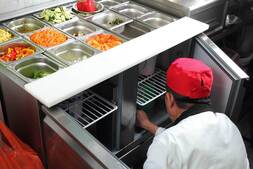 Restaurants and consumers alike have experienced the effects of the current supply-chain crisis, whether in the form of product shortages, delayed shipments, or changes in store hours due to reduced labor availability. (According to a recent National Restaurant Association survey, 75 percent of restaurants have been forced to change menu items due to supply chain issues.) While the challenges are widespread, many of them can be minimized. Consider these actions: Where possible, shrink the number of links in your supply chain between a food item and your guest: Pre-pandemic, this was about helping the climate and cutting waste, whereas now it’s also become a necessity for any restaurant that wants to be more certain of the items it will be able to offer on its menu. Plan farther down the line. According to FSR Magazine the casual dining brand Twin Peaks now places orders 12 weeks in advance when four to six weeks used to provide ample time. Focus on your relationships. In addition to communicating effectively with suppliers and paying bills on time, lean into existing and new collective agreements that enhance your purchasing power. Consider your branding. As operators focusing on chicken wings have learned in the past 18 months, it’s important to give yourself some leeway to broaden your offerings – perhaps to include new cuts of meat, or plant-based alternatives, or different presentations. FSR Magazine also suggests restaurants might consider building up a just-in-case inventory buffer – depending on the perishability and size of items that must be stored.  Even in the best of times, restaurant margins are thin. Challenges related to the pandemic, labor, food prices and the supply chain only place additional strain on them. But the good news is that there are a number of steps operators can take to cut costs without taking anything away from the guest experience. First, ease supply chain-strains by ensuring your inventory goes as far as possible. Encourage precise ingredient measurement across your menu – Modern Restaurant Management advises operators to measure ingredients in grams vs. ounces for a more precise result. Take stock of your energy use and find ways to use it more efficiently – by turning equipment on only at the time it is needed, using energy-efficient lighting, and adopting technology to monitor your appliances so you can be alerted and act quickly if something isn’t working as it should. Be just as mindful of food waste. To avoid having usable food scraps tossed out, Restaurantowner.com suggests eliminating trash cans in the kitchen and giving each kitchen employee a clear box with their name on it where they can place food scraps so managers can minimize food waste being generated from the kitchen. Where possible, consolidate purchases with a single supplier to gain leverage in purchasing agreements. Finally, make the most of the staff you have by scheduling people in accordance with your anticipated sales and traffic each week – your schedule should not be on autopilot  Consumers are expecting things to be a bit different as a result of the pandemic – and at a time when supplies continue to be short, labor is difficult to find and customer traffic is unreliable, restaurants can use this expectation to their advantage. Many restaurants already are: Take Michelin-rated Eleven Madison Park, which announced it would be reopening as an entirely plant-based restaurant after its closure during the pandemic. As you have managed your restaurant throughout the course of the pandemic, have you come to conclusions about major aspects of your business that need to change in order to preserve the longevity of your restaurant? Would you be better able to stabilize your menu by making it entirely plant-based? Have you always relied on a dine-in customer base but believe this can no longer be your main source (or even a small source) of sales? Do you think you should serve a different demographic of customers than you did before? Are you too reliant on labor shifts – and burdened by the need to provide higher wages and benefits? Now is a good time for reinvention. Identify your primary pain points when it comes to your supplies, staffing, marketing and day-to-day operations management. By changing things that may have needed changing for a long time, you can give yourself a new story to tell customers, refresh your brand and generate renewed interest in it as we emerge from the pandemic.  There’s plenty of pressure on restaurant prices lately, whether from the increased competition for labor, shortages of key ingredients, or other demands. How have you responded? According to recent research from Fitch Ratings, pent-up demand and fiscal stimulus have driven a recovery in restaurant sales in recent months – and that has enabled restaurants to pass increasing costs on to customers. Plenty of businesses have needed to (think of the restaurants who specialize in chicken wings), but others have hesitated due to the strains of the pandemic on customers in the past year. Where is the line for your customers when it comes to food prices – and what might you do to help smooth it out? Start by analyzing your menu and identifying your most costly and difficult-to-source items. Where might a less expensive or easier-to-source item be substituted? In cases where you need to keep a more expensive item on the menu, where can you incrementally boost the price of another item to help make up for the higher cost? Also consider the demographics of your customer base. According to recent consumer research from RMS cited in Nation’s Restaurant News, most respondents said upticks in food costs, the minimum wage and safety precautions justify price increases at restaurants – with Baby Boomers being most receptive to higher menu prices. Finally, you could consider adding an overall service charge to each order – with a brief, carefully worded message on the menu explaining why you need to do it – and how it ensures your restaurant can sustain itself and take care of employees.  Restaurant sales are up 8 percent over where they were in June 2019, according to NPD Group’s David Portalatin. While that’s positive news for sure, business conditions are far different from what they were in 2019. People are preparing more meals or meal segments at home than they did back in 2019, whether from scratch or from meal kits. The business-lunch and happy-hour set is now spending more days working (and eating) from home, and the delta variant of the coronavirus is causing anxiety about eating out where it didn’t exist before. That may mean that your once-busy urban location isn’t getting as much traffic and that your suburban location is seeing more delivery and carry-out business. It’s more important than ever to know your guests’ habits – where they are eating, when they are most apt to order a restaurant meal, and what promotions would tempt them to buy a meal or drink from you instead of staying home. Treat each transaction as an opportunity to gather helpful data that you can use to plan your next menu item or promotion – or even your next investment in technology or real estate. At every order, are you gathering information on what items are selling the best and what channels those orders are coming from? Are you incentivizing guests to join your loyalty program and analyzing their orders so you know which promotions are most likely to inspire them to return? Your systems for automatically gathering, understanding and acting upon consumer data are what will help you flex with the fluctuations of the current environment – and better weather whatever challenges might arise down the line.  As the supply chain is being impacted by factors including labor shortages, extreme weather, gaps in the availability of raw ingredients, and a spike in demand from consumers returning to foodservice outlets, businesses at every link in the supply chain are feeling the stress. At a time when some foodservice operators have been completely dropped by their distributor(s), the strength of your partnerships is paramount. At the time of this writing, the average fill-rate from manufacturers to distributors was running below 85 percent. But the service level for Premier Value 4 members is considerably higher than this average. That is due to the work our distribution partner, US Foods, is doing to rebalance inventory to provide our members with the best possible service. In recent quarterly earnings releases, US Foods and Sysco disclosed their food cost inflation rates: 8.2 percent and 10.2 percent, respectively. To keep this in context, a normal food cost inflation would be in the 2-3 percent range. Value 4 members have protection against this inflation with contracted manufacturer agreements (CMA). CMA’s give access to 350 vendors covering 105,000 products. Over the past 15 years, inflation on CMA products has been half of the inflation of non-CMA products. Our CMA contracts are firmly in place and while we will not know if that 50 percent “savings” rate is less or more until the current hyper-inflationary period has settled, we are confident that using CMA products is your best protection against inflation – and will offer extra security until we return to conditions that feel closer to normal. If you do not have these protections from your suppliers and partners, consider calling Value 4 to see if you qualify for our programs.  While surviving the pandemic was one challenge for the restaurant industry, coming out of it is another: Stress on the food supply could make it more likely that restaurants will offer promotions of foods that end up being inadequate in supply, inflated in price, or unavailable altogether. Strains on labor are contributing to the challenges in food distribution as well. As Mark Allen, chief executive of the International Foodservice Distributors Association, told the Wall Street Journal recently, “Over the last six weeks, we have seen the market come roaring back faster than anybody would have anticipated. The start-up has been, in many ways, as difficult as the shutdown…Everybody is trying to turn it on immediately and the capacity might not be there.” However, having a multi-tiered back-up plan can help you manage when you’re caught short on key supplies. As you consider your menu in the coming months, lean on the systems you have on hand to track pricing fluctuations and supply. If you have a dish you want to keep intact with no substitutions, you should be aware of multiple routes you might take to recreate it using different suppliers in case there is a food supply or safety problem in a particular country or region. If you’re open to changing up a dish with substitutions, identify first- and second-runner-up ingredients and brands that could help you recreate the dish if your first-choice options suddenly became scarce. |
Subscribe to our newsletterArchives
April 2024
Categories
All
|

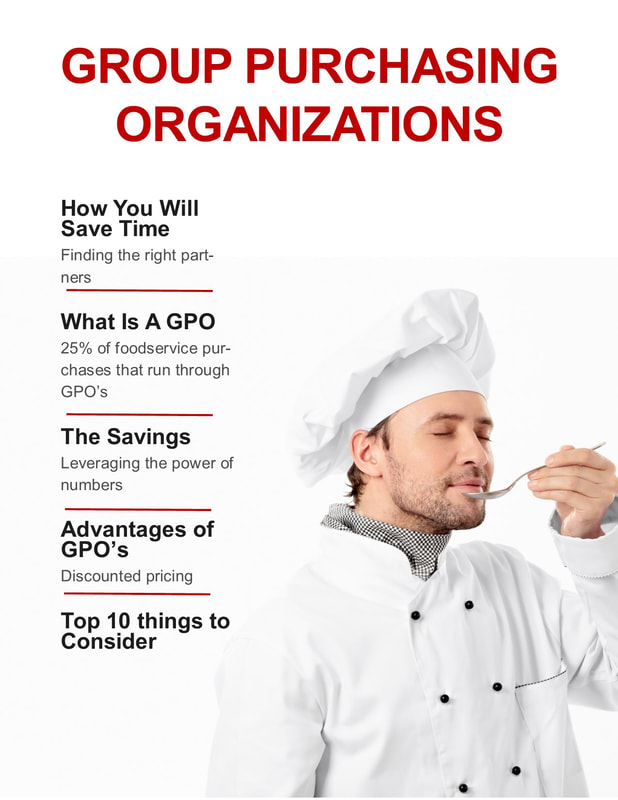

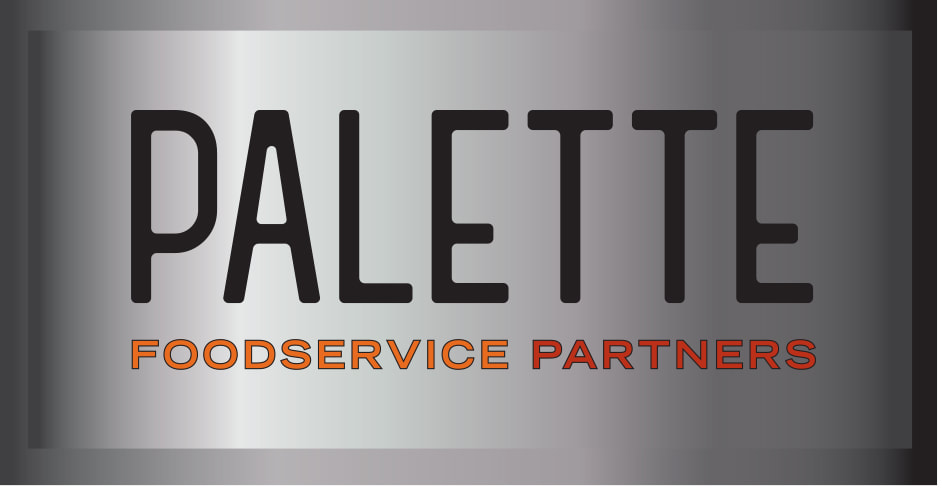
 RSS Feed
RSS Feed